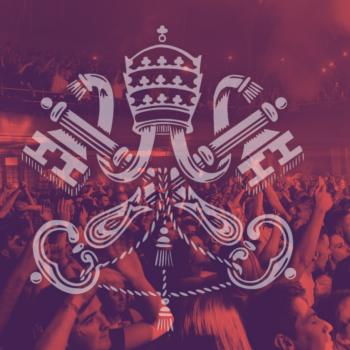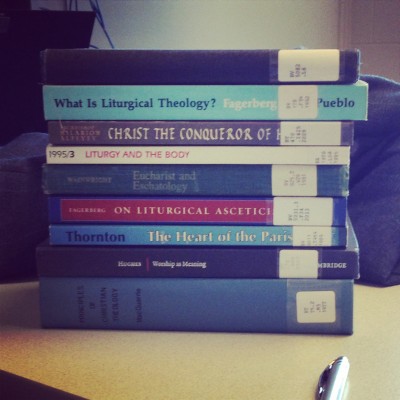Easter Sunday is over…now what? Well, for Christians who are part of the Church that adheres to the church/liturgical calendar, we have just entered Eastertide. Also referred to as Easter Season, Paschaltide, or Paschal Tide, Eastertide is the season of the church that begins with Easter Sunday and ends with the Feast of Pentecost. There are a total 50 days to this season during which we celebrate the Risen Lord. But why do we observe it and what does it mean?
Jewish Origins
Many feasts of the church find their origins in the Old Testament and the festival (and liturgical) life of Israel. Before Easter there was (and still is) Pesach—Passover—and before Pentecost there was (and still is) Shavu’ot—the Feast of Weeks. It is important to remember that the story and history of the church is not separate from, nor greater than the story of Israel. Indeed the God of Abraham, Isaac and Jacob is the one whom we worship and serve! As Paul remarks in Romans, we have been grafted into David’s line—into Jesse’s branch—and are part of the new Israel.
Israel was in bondage and slavery in Egypt and cried out to the LORD for deliverance. The LORD raised up Moses to deliver his people that they might worship him in the wilderness. The Last Supper is proof that Passover cannot be separated from the crucifixion: all four gospels place Jesus’ last night on earth in the context of Passover. Passover is therefore both the story of YHWH’s redeeming work in rescuing Israel from Egypt and the narrative context for Jesus’ work on the cross and tomb.
Shavu’ot is another Jewish festival and it takes place 7 weeks after Passover; thus the name “Feast of Weeks.” On this day Jews celebrate the giving of Torah by YHWH to Israel on Mt. Sinai. The Law was given to a people already redeemed and was based upon YHWH’s covenant with his people. Shavu’ot is also observed as a harvest festival for during the seven weeks between it and Passover; Israel was to be planting barley and other grains during that time, literally “counting the omer.” This feast is therefore both a celebration of YHWH’s gift of the Law—and therefore the constitution of his people—and a thanksgiving celebration for the harvest; it is also the context for Pentecost.
Christian Context
We know from Scripture that Jesus appeared to his disciples and some 500 people after his resurrection and before his ascension (1 Corinthians 5:6). During this time he spoke peace to his disciples, he opened their minds to the Scriptures, he broke bread with them, and then he ascended to the right hand of the Father. We celebrate the Feast of the Ascension during Eastertide (May 14, 2015); as one of my seminary professors used to quip, “We need to get Jesus good and ascended if he want him reigning over all things.”
Jesus commands and commissions his disciples at the Ascension. ““All authority in heaven and on earth has been given to me. Go therefore and make disciples of all nations, baptizing them in the name of the Father and of the Son and of the Holy Spirit, and teaching them to obey everything that I have commanded you. And remember, I am with you always, to the end of the age, ” (Matthew 28:18-20). After this the disciples are left alone to find one to replace Judas and then the Holy Spirit is given to the Church at the Feast of Pentecost.
Pentecost is the Greek word for Shavu’ot and the Church’s celebration happens parallel to that of Israel. While Israel was celebrating the gift of Torah and the harvest, the Church was being given the Holy Spirit who would lead and guide her into all truth. For the Law to be written upon our hearts (Jeremiah 31:33) the Spirit would need to be given, received and active in ministry.
In short, the Jewish festivals of Pesach (Passover) and Shavu’ot (Pentecost) are transformed by the triune God for the new Israel.
Passover and Shavu’ot are not replaced or retired but made new. They still form the interpretive matrix for the church’s celebration of God’s actions in and through Jesus. We are not suggesting that Easter is merely symbolic of Passover or Pentecost of Shavu’ot, but that these feasts also happen within the context of Israel’s story.
So What?
First and foremost, Eastertide is a season for feasting.
Jesus said in Matthew 9:15, “The wedding guests cannot mourn as long as the bridegroom is with them, can they? The days will come when the bridegroom is taken away from them, and then they will fast.” Eastertide is our celebration of Jesus’ earthly presence post-resurrection and therefore is not a time for fasting. As a church we have just emerged from the wilderness and fasting of Lent and we can now enjoy a time of God’s plentiful bounty.
We need to be careful with this one, however. It would be all too easy to take the things we’ve given up during Lent and to over-indulge in them during Eastertide. I gave up social media for Lent and I took on fasting on Fridays—can you imagine how much food I might eat or Facebooking I might do if I decided to over-indulge? I don’t want to imagine! Rather, our passions and desires should have been reoriented during Lent, that our celebrations and feasting may be more about God than about our own tastes and needs.
Second, Eastertide is another invitation to tell time differently.
Rather than telling time according to the Julian or Gregorian calendar, or based on sporting events, or holidays or family celebrations, the church tells time according to her corporate memory of God’s acts of salvation. Sure, May 14, 2015 is a lovely date but the Feast of the Ascension has far greater meaning. Remembering Eastertide means we remember the Resurrection and Pentecost; it means we remember Passover and Shavu’ot; it means we remember God’s actions and ongoing activity in his world.
Third, we can and should cling to Jesus.
When Mary Magdalene encountered the Risen Lord in John 20 she was told to not hold onto him. Jesus said, “Do not hold on to me, because I have not yet ascended to the Father,” (John 20:17). We however are on the other side of the Ascension and can cling to Jesus. In fact, I think we should see the season of Eastertide as an invitation to cling to the Risen Lord! The post-resurrection accounts of Jesus show him teaching his disciples and followers the meaning of the Scriptures, how the Law, the Prophets and the Psalms had been fulfilled, and how he was leaving them with peace.
As we await the gift of the Holy Spirit on Pentecost, may we cling to Jesus with joy and gratitude for all he has done.
May we observe a holy Eastertide with feasting and celebration.
May we tell time according to God’s righteous acts.
May we proclaim with our lips and lives, “Alleluia, He is risen! The Lord is risen indeed, Alleluia!”














